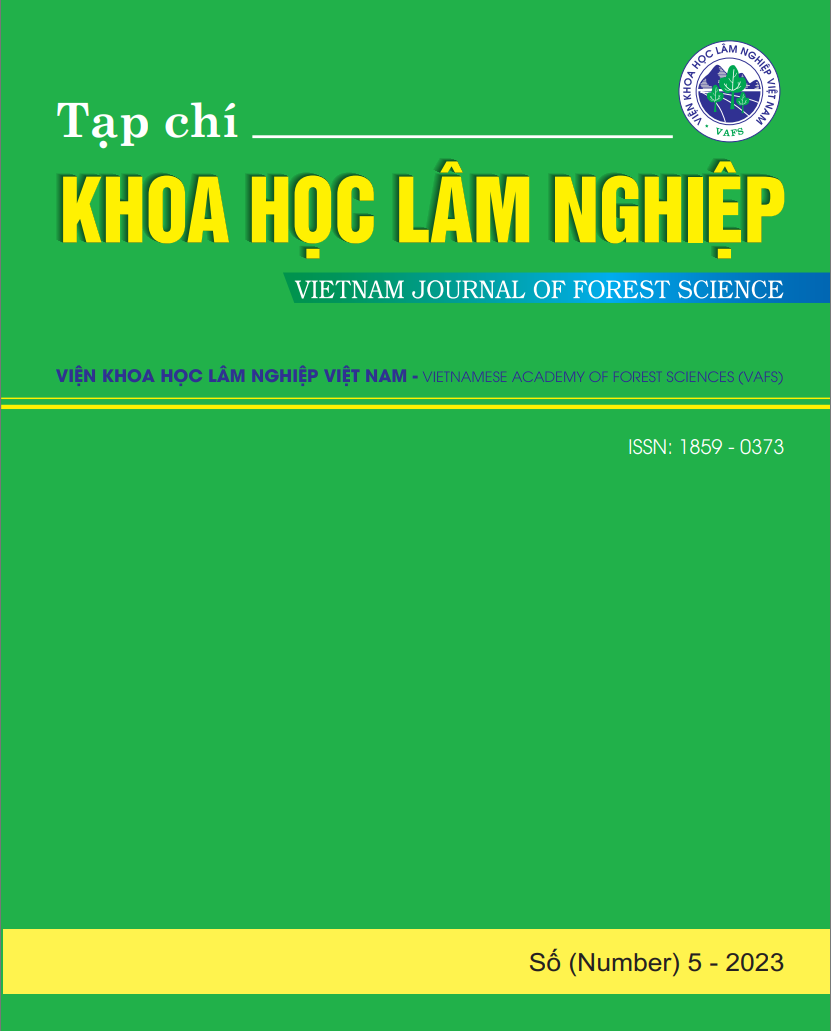RESEARCH RESULTS ON THE DESIGN AND MANUFACTURE OF AN UNDERSTORY BIOMASS AND POST-HARVEST RESIDUES AND ORGANIC MATERIAL PROCESSOR FOR PLANTATION FORESTS
DOI:
https://doi.org/10.70169/VJFS.1112Keywords:
Forestry mechanized equipment, forest residue processing machine, post - harvest organic material, site preparation for forest plantationAbstract
Treatment of forest residues, including understory vegetation, branches, and bark, is a necessary operation following each harvest and reforestation cycle. The research, design and manufacturing of machinery for processing forest residues and organic materials left after plantation harvesting is essential to meet the practical demands of production and to overcome the current reliance on labor-intensive manual clearing methods, which are limited in both productivity and quality due to the lack of suitable mechanized equipment. A residue processing equipment was designed and manufactured for attachment to agricultural tractors with engine power exceeding 50 hp. The working unit adopts a toothed-drum structure, operating based on a chipping and shredding mechanism, and is driven by a hydraulic transmission system. The equipment is powered by a hydraulic motor with a rated power of Nt = 18.36 kW, a working width of Bc = 1.66 m, and a drum diameter of Dr = 0.53 m, rotating at a speed of nt = 2550 rpm. The combination of the MTZ 82 tractor and the designed equipment demonstrated effective performance on reforestation sites with slopes up to 25%. The productivity ranged from 1.6 to 2.2 hectares per shift for natural shrub vegetation and from 0.35 to 4.2 tons per hour for post-harvest residues such as branches and bark, corresponding to 2.4 to 2.8 hectares per shift. The processed material length varied from 3.0 to 10.0 cm. The equipment is fully domestically manufacturable, cost-effective, and suitable for deployment at forest production units in Vietnam.
References
1. Nguyễn Nguyên Cự, Nguyễn Thị Phương Mai, 2024. Phát triển kinh tế tuần hoàn trong nông nghiệp góp phần giảm ô nhiễm môi trường. Tạp chí Môi trường, chuyên đề III.
2. Nguyễn Tiến Hiệp, Trần Văn Thái, Nguyễn Văn Hòa, 2021. Nghiên cứu một số giải pháp kỹ thuật xử lý thực bì và phụ phẩm sau khai thác rừng trồng. Tạp chí Nông nghiệp & Phát triển Nông thôn, số 3/2021
3. Tô Quốc Huy, Đoàn Văn Thu, Bùi Việt Đức, 2020. Kết quả nghiên cứu cải tiến hệ thống di động máy kéo làm việc trên đất nông, lâm nghiệp. Tạp chí Khoa học Lâm nghiệp số 5/2020.
4. Nguyễn Đức Toàn, Trần Văn Địch, 2018. Cơ sở thiết kế máy và thiết bị chế biến nông - lâm sản. Nhà xuất bản Khoa học và Kỹ thuật.
5. Lê Văn Thái, Phạm Văn Tỉnh, Nguyễn Hoàng Tân, 2018. Truyền động thủy lực và khí nén. Nhà xuất bản Nông nghiệp.
6. Đoàn Văn Thu, 2021. “Nghiên cứu thiết kế, chế tạo một số thiết bị và máy công tác chuyên dụng liên hợp với máy kéo có khả năng kéo bám và ổn định cao phục vụ trồng và chăm sóc rừng” Báo cáo tổng kết đề tài KHCN cấp Bộ, Viện Khoa học Lâm nghiệp Việt Nam.
7. FAO, 2016. Mechanization for Rural Development: A review of patterns and progress from around the world. Food and Agriculture Organization of the United Nations, Rome.
8. Srivastava, A. K., Goering, C. E., Rohrbach, R. P., & Buckmaster, D. R., 2006. Engineering Principles of Agricultural Machines (2nd ed.). American Society of Agricultural Engineers.









